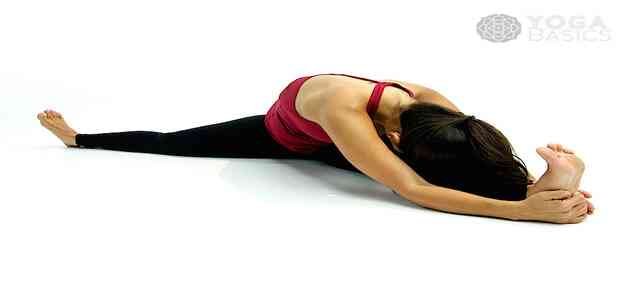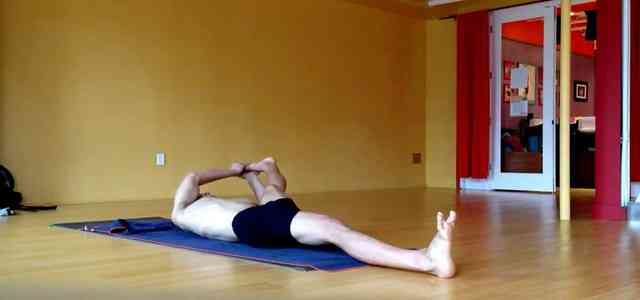Yoga is a beautiful practice that can help you find peace in your mind and body. This article will introduce two popular yoga poses, Parivrtta Ardha Chandalasana (Revolved Half Moon Pose) and Parsva Upavistha Konasana- Left Angle Hip Abductor + Right Breast Squeeze on an Inclined Dog Patadeep Breathing Method which has many benefits such as activating senses while de-stressing!
How to Perform Parivrtta Ardha Chandra Chapasana
You have to begin this pose in traditional Half Moon by balancing your left leg on your right leg. Then you have to extend your one arm behind you, be careful while doing it and your right arm extended to the Earth in front of your right foot slowly.
After that, you need to focus on one spot and start squaring your hips while you are reaching the earth down with your left fingertips. However, in parivrtta ardha chandra chapasana focus is important.
Trivikramasana | Standing Asana in Hatha Yoga
Now take your right hand to your right hip. Then extend a little from your tailbone through your crown of head carefully, you see yourself creating a flat back and long line of energy. You need to pull your belly button in towards your spine slowly and carefully, and up towards your ribs for stability and balance.
Then begin to twist your torso but not your hips to the right. Make sure to stack your right shoulder on top of your left.
Step By Step Guide:
- You need to begin with Tadasana the mountain pose. In which make sure your feet are together and your arms are alongside your body.
- In step two you have to exhale and step your left leg about 3 to 4 feet to your backside. Make 45 degrees with that back foot. Your back toes must be pointed towards the top left corner of your own mat.
- Next, engage your belly by gently drawing the navel in and up towards your spine slowly.
- On an inhale, lift your arms to your shoulder height. And make sure your palms face down towards the ground. Relax your shoulders.
- The Trikonasana is when you are unable to lengthen your hinge anymore.
- Now bring your left hand to your left hip slowly. Then gaze in front of your right pinky toe for about 2 feet. Then start to bend the right knee carefully your weight gets to the right leg then eventually to the left leg.
- In the next step, your right fingertips come to a block or the ground where your gaze is. Straighten your leg without locking.
- Raise your leg to your hip height. Bend your knee to hold the top of the foot.
- Ensure that your shoulder blades are drawing down the back. While your gaze is straight out or up towards the sky without any hurdle or pain.
Effects of Parivrtta Ardha Chandra Chapasana
Revolved half-moon has many essential benefits this inversion helps to improve balance and coordination, while also strengthening the core muscles. In addition, this pose can help to increase flexibility in the shoulders and spine. Full wheel pose is also said to be beneficial for the nervous system and can help to calm the mind.
- It detoxifies the body.
- Helps in stimulating digestion.
- Maintain the proper metabolism.
- It let you focus on things.
- Strengthen the whole body and internal organs.
- It is actually really effective in reducing anxiety, stress, and sluggishness.
Contraindication of Parsva Upavistha Konasana
- People with serious health injuries should avoid it, Specially people who are suffering from a neck injury.
- Make sure your spine is absolutely straight while doing this exercise otherwise, you will face serious injury while performing Parivrtta Ardha Chandra Chapasana.
- High blood pressure patients should avoid this yoga pose.
- However, as with any inversion, it is important to be cautious when practicing this pose and to listen to your body. If you feel any pain or discomfort, it is best to come out of the pose slowly and carefully.
Parsva Upavistha Konasana Pose
Parsva Upavistha Konasana is the side-seated wide-angle pose. It is effective in many ways. You have to begin it with Dandasana Pose. Put your plans behind you then lean your torso back slowly. Open your legs as wide as you can slowly. However, you need to straighten your spine and rest your hands in front of you.
Now take a deep breath in, after that, lift your left hand up slowly and bend towards your right, make sure you are not pushing your front torso forward. Then grip your right big toe tightly with your left index finger, middle finger, and with your thumb.
While doing this, if you can’t reach your feet then you need to place your palms on your ankles. You can also place them on your shin bones. Make yourself comfortable while doing parsva upavistha konasana, you need to stay in this pose for 3 to 6 long breaths for better results. Stretching your body in this way releases muscle tension.
Utthita Hasta Padangusthasana 2
Parsva Upavistha Konasana Benefits
- Parsva Upavistha Konasana benefits us because it is a yoga pose especially for beginners and for the gentle hip opener.
- This pose stretches and strengthens our bodies. We have to Seated Side Straddle Pose to stretch our hip flexors and quadriceps muscles. Through this pose, our side abdominal muscles and pelvic floor muscles will also get stretched and we feel much more relaxed.
- It improves blood circulation in the body and brings calmness to the mind. Moreover, helps in relieving stress and can cure insomnia.
- If we keep doing it regularly it helps us in stretching one side of the body and contracts our other side of the body and makes us flexible which is extremely helpful for our spine. It improves strength in our back muscles.
- The Parsva Upavista Konasana benefits us to minimize our stiffness of outer hips by stretching the gluteus and hamstring muscles. We can also get rid of back and neck pain because of its unique pose.
- It is also helpful for the growth of leg muscles in teens and kids.
Contraindication
Contraindications of parsva upavistha konasana include but are not limited to the following: pregnant women, those with heart conditions, high or low blood pressure, Glaucoma, hiatal hernia, and neck injuries. If you have any of these conditions, please consult your physician before attempting this pose. Additionally, beginners should be cautious when attempting this pose and should always have a qualified yoga instructor present
Supta Trivikramasana
The supta trivikramasana is actually a yoga pose in which you advance stretch your hamstring muscles. The word Supta means resting and trivikrama means three steps in Sanskrit. In English supta trivikramasana is known as supine split pose. In this asana, you are in a supine position facing the sky in the beginning then lift your one leg overhead. After that you grasp the foot with both of your hands then direct the straight leg into a split along with your head carefully.
Supta trivikramasana is stretching the hamstrings and provides you with other benefits also, such as physical benefits. In this asana, get activate the svadisthana (sacral) and Muladhara (root) chakras. Svadisthana sacral is actually associated with creativity, sexuality, joy, and pleasure while doing supta trivikramasana. On the other hand, Muladhara offers a sense of security and safety.
Benefits of Supta Trivikramasana Asana
- It stretches and strengthens the hamstrings and pelvic floor muscles, It also deeply stretches the abdominal muscles and internal organs.
- If you practice supta trivikramasana it improves hip flexibility.
- It also improves knees and shoulder flexibility.
- This pose gives awareness of balance. Doing this asana leads you to proper calmness and balance.
- This pose also helps in improving digestion.
Contraindications of Supta Trivikramasana
Taking precautions is necessary while doing any type of exercise and yoga.
While Supta Trivikramasana can be a great way to stretch the body and release tension, there are some contraindications to be aware of before practicing this pose.
- Do not perform this yoga without proper guidance.
- People with any kind of injury legs, knees, and arms should avoid this asana.
- Patients with high blood pressure also avoid it.
- Heart problem patients should avoid it as it is not good for them.
- Do not practice this yoga after post-delivery avoid it for at least six months.
- if you suffer from migraines or dizziness, you should also avoid Supta Trivikramasana as it may increase these symptoms.


